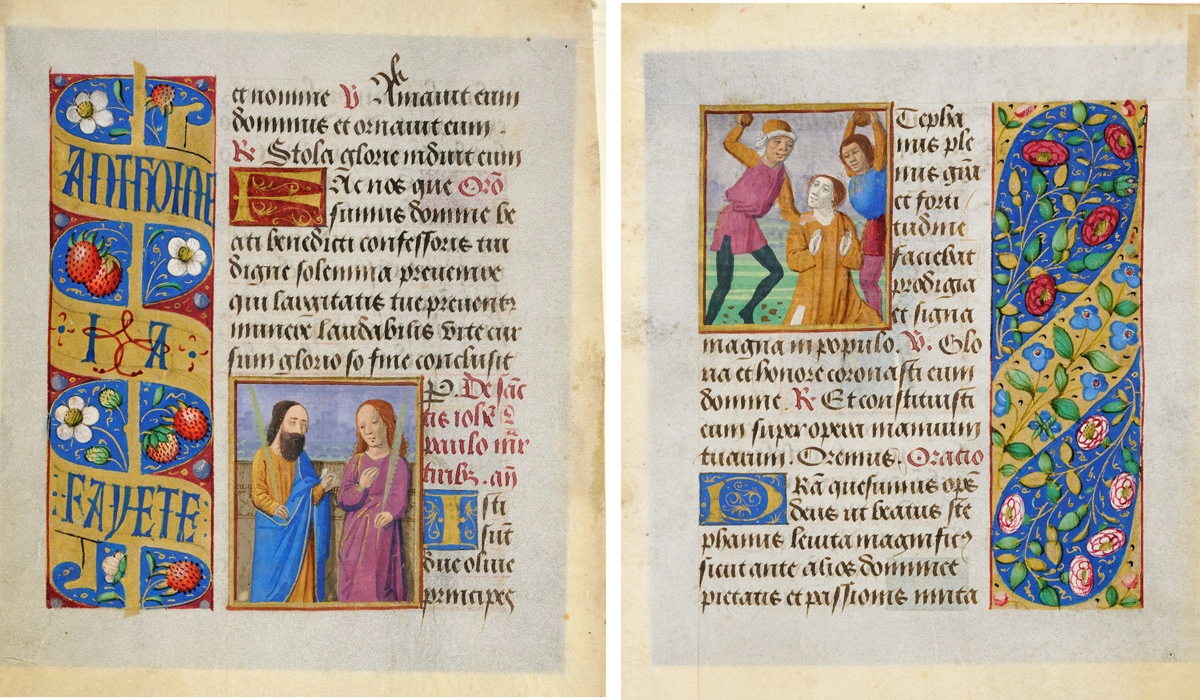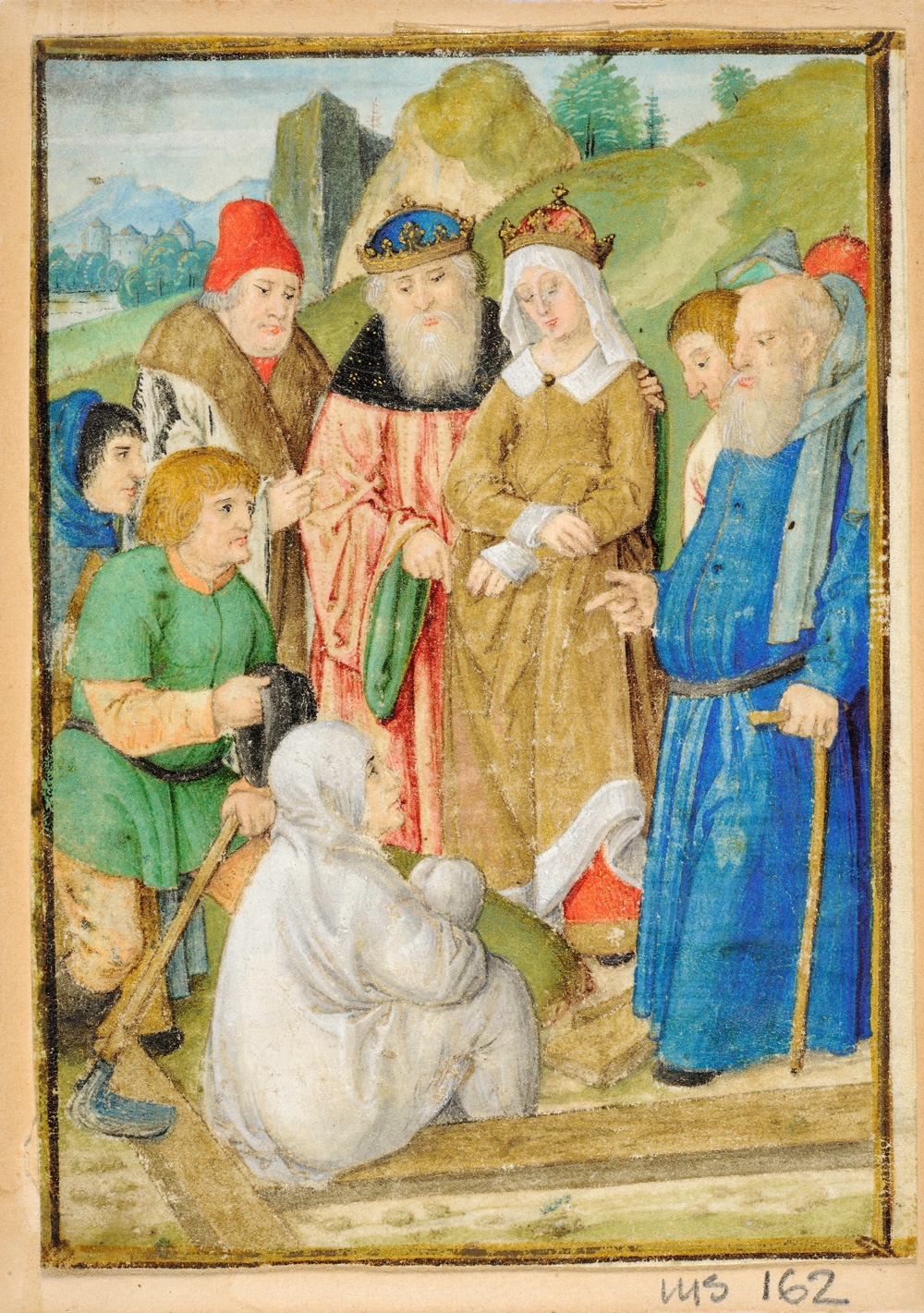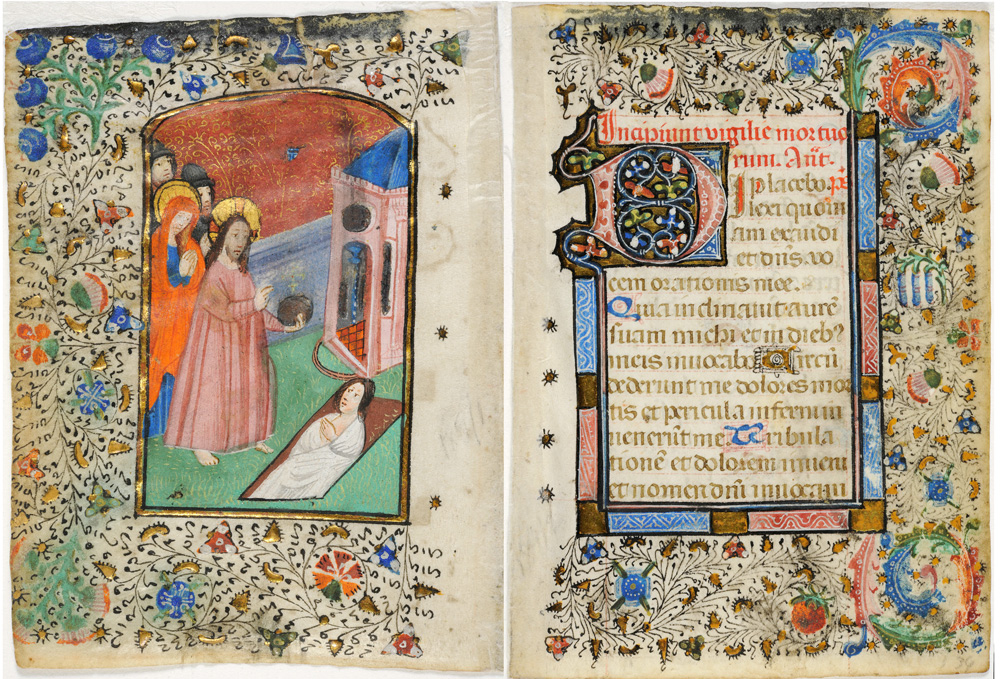
Courtesy of McGill Library
It was said that looking at illuminated manuscripts was like gazing upon heaven itself.
Though largely forgotten today, connoisseurs consider them unique, high-quality works of art.
The brightly-coloured pages of McGill and Quebec’s oldest written artefacts of the Middle Ages and Renaissance, are now available for all to see on a new web site entitled Horae: Collection of Books of Hours, and in an exhibition at the Montreal Museum of Fine Arts (MMFA), entitled Resplendent Illuminations: Books of Hours from the 13th to the 16th Century in Quebec Collections.

Courtesy McGill Library
Books of Hours (horae in Latin) were prayer books for lay people, used for reciting devotions at certain hours of the day or night. They were best-selling books until the 16th century. Today a Book of Hours can cost anywhere from $10,000 to $500,000, or more. Of the 59 illuminated manuscripts on display at the MMFA, 37 come from McGill.
Divine details
“These Books are true gems,” says Richard Virr, Retired Chief Curator, Rare Books and Special Collections, and co-curator of the exhibition at the MMFA. “They are so visually engaging that one marvels at the detail, both in the miniatures, and the surrounding decorations.
“It could take months and even years to complete a manuscript Book of Hours,” continues Virr. “The workshop, or scriptorium, was an organized production line – the scribe, the decorator, the illuminator, the embosser – working in sequence. There are recognizable flowers, plants, birds, as well as grotesques and fantastic animals, in the margins.”
McGill began collecting these illuminated manuscripts from in the 1920s. One of the first University Librarians, Dr. Gerhard Lomer, acquired them for the Library Museum, dedicated to the history of the book, which opened in 1922. The Library Museum was closed in the late 1940s, and the collection was incorporated into Rare Books and Special Collections.
Handle with care
Because the illuminated manuscripts are so delicate, digitizing the Books of Hours was an involved process that took about a month in total. Greg Houston, Digitization and New Media Administrator, was assisted by four digitization project assistants trained in Rare Book handling and proper photography techniques. In all, seventy-eight detached leaves, nine manuscript books and three printed books were processed.
Each page was individually photographed. The books were delicately held open by one operator, using a wooden palette, while the second operator controlled the photographic software.
The camera system includes a Nikon 3dx and 60mm macro lens mounted to a TTI reprographic motorized column with two buhlite soft cube lights. “Colour accuracy is paramount in digitization, and great efforts were made to ensure fidelity to the illuminations and colour of the originals,” says Houston.
Team effort
The MMFA exhibition is the result of a four-year Humanities and Social Sciences Research Council Grant to produce the Catalogue raisonné pour les Livres d’Heures des XVe et XVIe siècles conservés au Québec.
The catalogue is the work of the Groupe de recherche multidisciplinaire de Montréal sur les livres anciens, of which Virr is a member, under the direction of Professor Brenda Dunn-Lardeau, of l’Université du Québec à Montréal.
The Groupe de Recherche includes Concordia University, le Musée de l’Amérique francophone, the Jesuit Archives (Canada), le Séminaire de Montréal (l’Ordre de Saint Sulpice), and the MMFA.
View the digitized Horae: Collection of Books of Hours

Courtesy McGill Library
